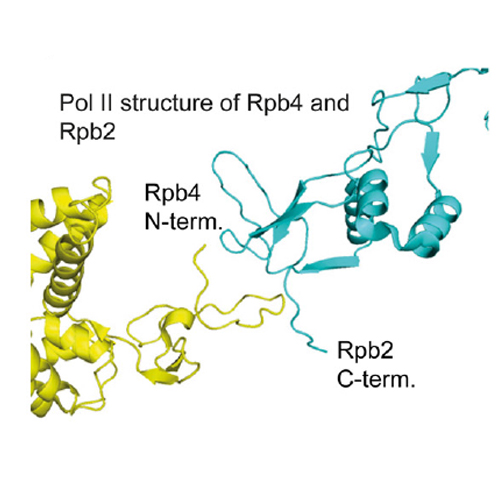Rpb4 Subunit Functions Mainly in mRNA Synthesis by RNA Polymerase II
21-May-2014
The Journal of Biological Chemistry, 2014, doi: 10.1074/jbc.M114.568014, 289, 17446-17452 published on 21.05.2014
The Journal of Biological Chemistry, online article
The Journal of Biological Chemistry, online article
RNA polymerase II (Pol II) is the central enzyme that carries out eukaryotic mRNA transcription and consists of a 10-subunit catalytic core and a subcomplex of subunits Rpb4 and Rpb7 (Rpb4/7). Rpb4/7 has been proposed to dissociate from Pol II, enter the cytoplasm, and function there in mRNA translation and degradation. Here we provide evidence that Rpb4 mainly functions in nuclear mRNA synthesis by Pol II, as well as evidence arguing against an important cytoplasmic role in mRNA degradation. We used metabolic RNA labeling and comparative Dynamic Transcriptome Analysis to show that Rpb4 deletion in Saccharomyces cerevisiae causes a drastic defect in mRNA synthesis that is compensated by down-regulation of mRNA degradation, resulting in mRNA level buffering. Deletion of Rpb4 can be rescued by covalent fusion of Rpb4 to the Pol II core subunit Rpb2, which largely restores mRNA synthesis and degradation defects caused by Rpb4 deletion. Thus, Rpb4 is a bona fide Pol II core subunit that functions mainly in mRNA synthesis.











